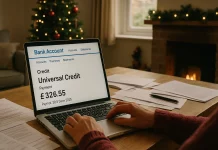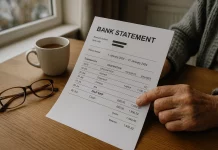How reliable is the saying that business is only worth the amount that the buyer is willing to pay for it? You could choose to settle for this statement or no. However, valuing a business is not just about buying or selling a company. Knowing the accurate value of your business is essential in growing and expanding your business. Your business’s accurate value can help you focus on areas of improvement, set reasonable share prices for your business, and secure investment or funding. This article will highlight several ways to get to an appropriate value of your business, factors to consider while valuing your business, and ways to increase your bargaining power as a business seller.
Factors to Consider When Valuing a Business
There are two types of factors to consider when valuing a business. The tangible factors like stock and fixed assets are clear and easy to value. Below is a list of intangible factors that make accurate valuation a not-so-easy process.
- The reputation of your business.
- Value of your customers.
- The trademarks of your business.
- The reason for valuing your business- are you in distress to sell your business?
- The age of your business.
- The business’ products that are in the market.
- How strong the team behind the business is.
- Business relationship with Suppliers.

Methods for Valuing your Business
Entry Cost
Find out the approximate cost for starting a similar business in the UK. This will involve factoring in the startup costs, the tangible assets, the cost of developing the products and building up a customer base, the cost of recruiting and training staff, and everything else that helped to get the business to its position today.
When using this method, it is essential to factor in any savings you could have made when setting up your business. For instance, you realized that you could get better advice on sourcing material, or you could save by locating the business somewhere else. You get an entry cost by subtracting this figure from the initial figure. The final figure is your valuation in this case.
Asset Valuation
If your business is in property and manufacturing or is generally stable and established, you might as well value it by the asset base. To start an asset valuation, you first need to check on the assets recorded in the business accounts to come up with the Net Book Value (NBV) of the business.
After looking at the asset figures in the books, you need to adjust them by considering the economic realities of the assets. This will give a rough figure of the true worth of the assets. Think of old stock and the fact that it depreciates, also debts that have little likelihood to be paid should be knocked off.
Valuation by Discounted Cash Flow
You can use this method if you run a utility company or a mature business with predictable cash flows. This is a complex method of business valuation that relies on assumptions about the future of your business. You reach this kind of valuation by adding a predicted figure of the dividends for the next ten or so years, plus a rough value of what today’s cash flow will be worth in the future.
The discounted interest rate used to calculate the future cash flow is normally a range between 15 to 25 percent. This rate accounts for the time value of money, and the risk, with the assumption that one Euro today is worth much more than one Euro in the future.
Valuation Basing on Industry Rules of Thumb
Buying and selling of businesses are more common in some industries. Such industries usually have their own guiding rules of the thumb based on a number of things other than just profit. For instance, in the retail industry, businesses are valued based on factors such as turnover, customer base, and the number of outlets.
This kind of valuation will help the buyer in setting their expectations and shaping the business to new industry operational standards.
Price to Earnings Ratio (P/E)
If your business has a well-established profit track record, you can value it using the price-to-earnings ratio. If you predict high-profit growth and your business shows a good record of repeat earnings, then the business has a high P/E ratio. You may need the services of a business advisor to arrive at a suitable P/E ratio for your business.
For instance, tech startups usually have a high P/E ratio because of their high growth rates, while more common companies like state agencies lower P/E.
How to secure a Good Valuation for Your Business
- Plan Ahead – Although you want to sell your business, you will need to have a ready business plan to present to your buyer, clearly focusing on how you intend to achieve your short-term and long-term business goals.
- Reduce business risk ahead of selling your business – Check out potential risks that your buyer could identify and consider working on them. For instance, if your business is too dependent on a particular group, you could consider diversifying your client base.
- Put your records in order – put all your great processes in place, both financial and procedural. This will increase the confidence of the buyer in your business and therefore increase your bargaining power.
Well, a business on sale is worth the amount the buyer is willing to pay for it. Different types of businesses may require different types of valuation. This article has highlighted five different methods of valuing a business for sale in the UK. The value of any business will depend on the tangible assets, the intangible assets, and the seller’s negotiation skills. Be sure to do some good preparation before you value your business for sale in the UK. Establishing a good relationship with your customers and suppliers, recruiting a strong, stable team to spear your business, and keeping clear records are some of the best ways to prepare your business for sale valuation. Each prospective buyer may view different variables as risks. If you are selling your business, you will be better placed if you try to pre-empt most of these risks and minimize them.































